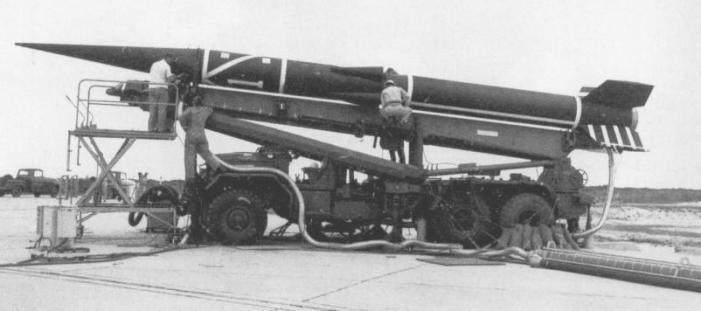Place of origin United States Designed 1957-1958 | In service 1959 Manufacturer McDonnell | |
 | ||
Used by | ||
The Alpha Draco missile, also known as Weapons System 199D (WS-199D), was an experimental ballistic missile developed by McDonnell Aircraft in the late 1950s to investigate boost-glide reentry. Three test flights were conducted in 1959, of which two were successful.
Contents
Design and development
As part of the WS-199 project to develop new strategic weapons for the United States Air Force's Strategic Air Command, McDonnell Aircraft developed the Alpha Draco missile between 1957 and 1959. The purpose of the rocket was to establish whether a strategic missile using the "boost-glide" principle of propulsion could be practically used. The idea had been proposed by Walter Dornberger, who had moved to McDonnell after working for a short time at Bell Aircraft. Dornberger had originally worked on the idea as part of efforts to extend the range of the V2 missile late in World War II.
The Alpha Draco missile was a two-stage vehicle, the first stage comprising a Thiokol TX-20 solid-fuel rocket of the type used in the MGM-29 Sergeant theatre ballistic missile, and the second stage using a Thiokol TX-30 solid-fuel rocket. The payload vehicle was aerodynamically shaped, using the lifting body principle to provide aerodynamic lift; following burnout of the first stage, the vehicle would coast for a short time before ignition of the second stage, burnout of the second stage was followed by the vehicle entering the glide phase of flight, which would be terminated by a dive upon the target.
Operational history
Three test launches of the Alpha Draco vehicle were conducted during 1959, the missile being launched from a land-based gantry. The initial flight, on February 16, was successful; the second flight, one month later, also fulfilled its test goals. The final launch of the Alpha Draco on April 30, however, suffered a flight-control failure and was destroyed by range safety command. With the expenditure of the third and final vehicle, the program came to a halt, the project's cost having come to a total of approximately $5 million USD ($43 million today).
The program demonstrated that the vehicle was able to generate lift/drag ratio of 3.5 to 1, allowing it to greatly extend its range. Although this was not put to immediate use, the tests provided valuable data that was used for later programs like the Boost Glide Reentry Vehicle and the ASSET and PRIME programs. Better understanding of the hypersonic lift process also led to the lifting body designs of the 1960s.
